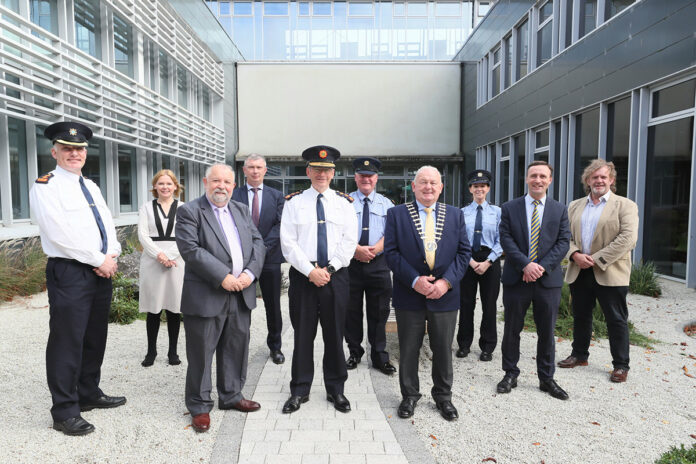PROGRESS with the creation of the new Clare-Tipperary Garda Division is expected to accelerate in 2022, according to the Garda Commissioner.
Commissioner Drew Harris, outlined how the pandemic has posed challenges for some aspects of the merger process.
Despite that, he said the development of the amalgamated division, whose headquarters are in Ennis, will ramp up next year.
Outlining the Garda Siochana’s new operating model, Commissioner Harris said policing at divisional level is among the force’s main priorities.
“The Division is the unit by which policing is delivered,” Commissioner Harris said.
“The model involves more frontline garda, enhanced national and regional support and improved performance.”
Commissioner Harris outlined how changes to the force, at regional level, have already been introduced.
“Under the new divisional structure, Clare will join Tipperary,” he outlined.
“Covid-19 did set the plans somewhat askew, however, the work carried on in the background on administrative and support functions.
“In 2022, we will start to move on operational modifications. We are doing each division in term, in a step-by-step incremental way. A lot of the building blocks are already in place.”
Commissioner Harris said he wants more capability to be built at divisional level, including the likes of services from the Protective Services Unit (PSU).
He also outlined that he wants to increase the local resources targeted at fraud and to increase the number of Gardai doing frontline duties.
“There are four key areas in each division – community engagement, crime, performance, and business services,” the Commissioner outlined.
“I want the Divisional Officer to have a far greater say in how policing is done locally. Every division is different. I want the Chief Superintendent to be in a position to respond.”
Commissioner Harris added that there were significant community benefits to be derived from the new divisional model.
“These will include the presence of a 24/7 inspector,” he said. “Each division will have one available. Each division will also have its own Superintendent responsible for crime. There is a shortage of sergeants, but we are stepping up the process.
“There will also be a community engagement team in each division, supported by sergeants and inspectors. We will also have an improved crime capability, especially in terms of protective services.”
In respect of the choice of Ennis for the HQ of the division, Commissioner Harris said factors including the proximity of Shannon Airport were considered. The current total of 875 Garda personnel, supplemented by 160 civilian Garda staff, is to rise, Commissioner Harris said to a total of around 1,500 personnel.
The Commissioner added that not all staff would be centralised at the Ennis headquarters.
At the end of the meeting, Chairperson of the JPC, Councillor John Crowe thanked the commissioner for locating the divisional headquarters in Ennis, saying it was vitally important for the county.
Speaking to the media following the JPC meeting Commissioner Harris said Garda management wanted to make sure appropriate support was in place, in terms of the business services to support the new division.
“A lot of the other things, the operational things have happened,” he said. “We have the Protective Services Units (PSUs) throughout the country.
“We’re developing the regional infrastructure to support cybercrime and we’re advancing the training around fraud investigation. And that we’ll deal with things such as for insurance type fraud at a local level.
“So a lot of the advances that we want to make in terms of policing service we provide, they’re already been put in place.
“The next thing we want to do is to enlarge these divisions and in fact streamline our overheads in terms of just the administration.
“We want to take administration and the cost of bureaucracy out of the system and apply more of that operational policing.”
by Fiona McGarry

